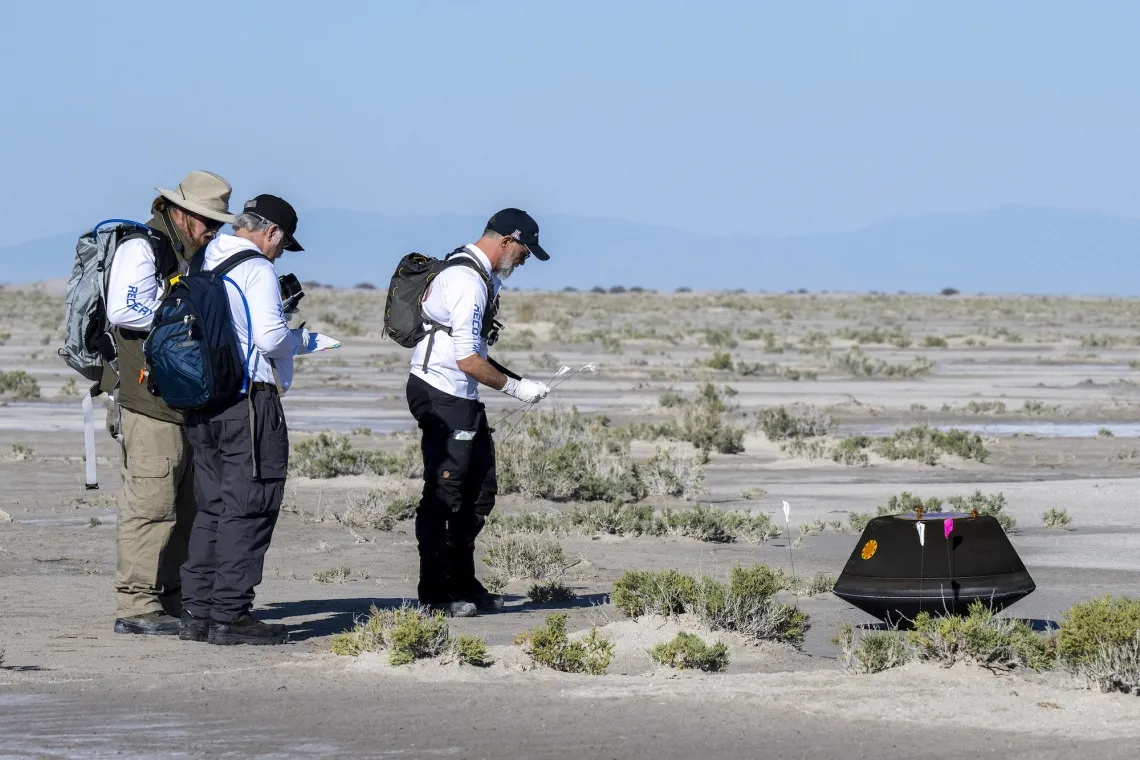UArizona-Led OSIRIS-REx Mission Delivers Largest-Ever Asteroid Sample to Earth

After years of anticipation and hard work by the mission team, the University of Arizona-led NASA OSIRIS-REx mission has successfully landed a capsule with rocks and dust from the asteroid Bennu in the Utah desert.
The capsule landed at 8:52 a.m. Mountain Daylight Time – 7:52 a.m. in Tucson – on Sunday, in a targeted area of the Department of Defense’s Utah Test and Training Range, or UTTR, 80 miles southwest of Salt Lake City.
Dante Lauretta, principal investigator for OSIRIS-REx at UArizona, was among the first people to approach the sample return capsule after it landed.
“It was like seeing an old friend that you hadn't seen for a long time,” Lauretta said during a post-landing press conference hosted by NASA at UTTR. ”I did want to give it a hug.”
Remembering the late Michael Drake, Lauretta said his former mentor and head of the UArizona Lunar and Planetary Laboratory who first came up with the mission concept “would have been proud today.”
“I was there when the capsule was nothing but a PowerPoint on a slide in a proposal that we were submitting to NASA,” Lauretta said. “It was amazing and emotional.”
According to Lauretta, the capsule didn’t bounce, didn't skid, made only a tiny divot and came to rest gently, tipped on its side.
"Boy, did we stick that landing," he said, "and that is pretty much what OSIRIS-REx has done consistently."
Within an hour and a half, the capsule was transported by helicopter to a temporary clean room set up in a hangar on the training range, where it now is under supervision and connected to a continuous flow of nitrogen.
Getting the sample under a "nitrogen purge," as scientists call it, was one of the OSIRIS-REx team's most critical tasks today. Nitrogen is a gas that doesn't interact with most other chemicals, and a continuous flow of it into the sample container inside the capsule will keep out earthly contaminants to leave the sample pure for scientific analyses.
The Bennu sample – an estimated 8.8 ounces, or 250 grams – will be transported in its unopened canister by aircraft to NASA's Johnson Space Center in Houston on Monday, Sept. 25. Curation scientists there will disassemble the canister, extract and weigh the sample, create an inventory of the rocks and dust, and, over time, distribute pieces of Bennu to scientists worldwide.
